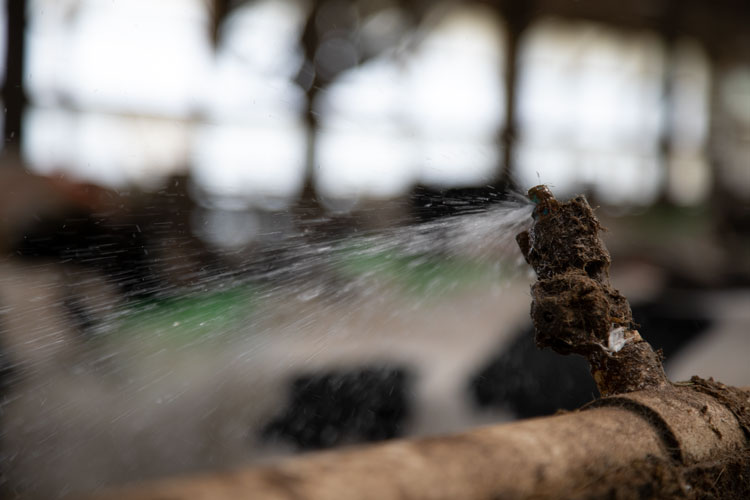
In the last several decades, cow cooling, particularly in the lactating pens, has become common on many farms. When hot comes to humid and milk production drops, it’s not hard to justify heat abatement tools. Fans, sprinklers, and shades have found their way into rafters, aisles, and pastures.
More recently, recognition has been given to the need for cooling in the dry period. Studies at the University of Florida have indicated significant impacts on both dams and their calves that are exposed to heat stress during the dry period.
A natural progression of this research was what Bethany Dado-Senn presented at the American Dairy Science Association’s annual meeting in Cincinnati, Ohio. She and her teammates at the University of Florida researched not only the impact of in utero heat stress, but also heat stress and abatement in the preweaned calf.
Their study hypothesized that heat abatement provided postnatally would improve calf thermoregulation and growth, particularly if dairy calves were also exposed to heat abatement prenatally.
They broke calves into one of four groups:
1. Cooled prenatally and cooled postnatally (CLCL)
2. Cooled prenatally and not cooled postnatally (CLHT)
3. Not cooled prenatally and cooled postnatally (HTCL)
4. Not cooled prenatally nor postnatally (HTHT)
It’s important to note that all calves were allotted up to 10 liters of milk replacer via an automatic feeder and calves were weaned at 42 days of age. The group tracked the calves for 56 days recording skin temperatures, rectal temperatures, respiration rates, body weights, and feed intake.
Calves that received cooling after they were born tended to consume more milk than those that did not, and grain intake was higher in postnatally cooled calves. Across the board, CLCL calves had the lowest skin temperatures and rectal temperatures lowered by both pre- and postnatal cooling in the morning and afternoon.
When analyzing respiration rates, HTCL calves had the lowest breaths per minute throughout the day and CLHT had the most. Further, prenatally cooled calves were heavier at calving and at weaning.
“Both before and after birth, heat stress abatement drives key aspects of thermoregulation and influences growth and feed intake patterns,” concluded Dado-Senn.








